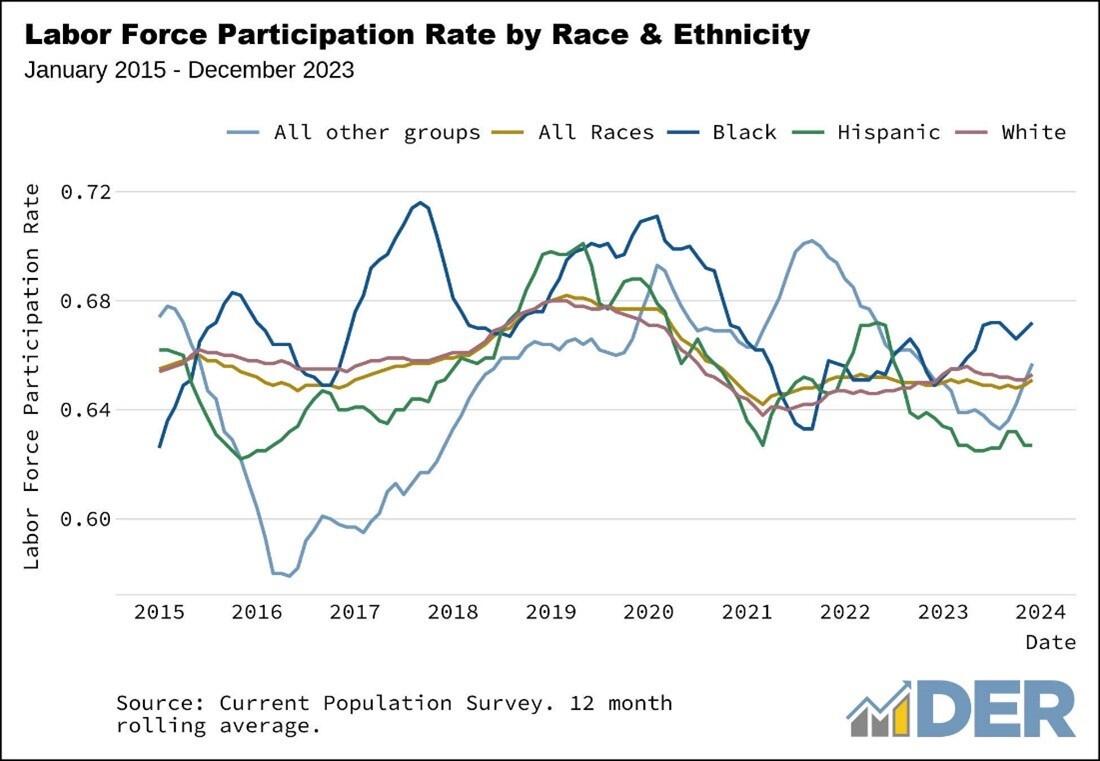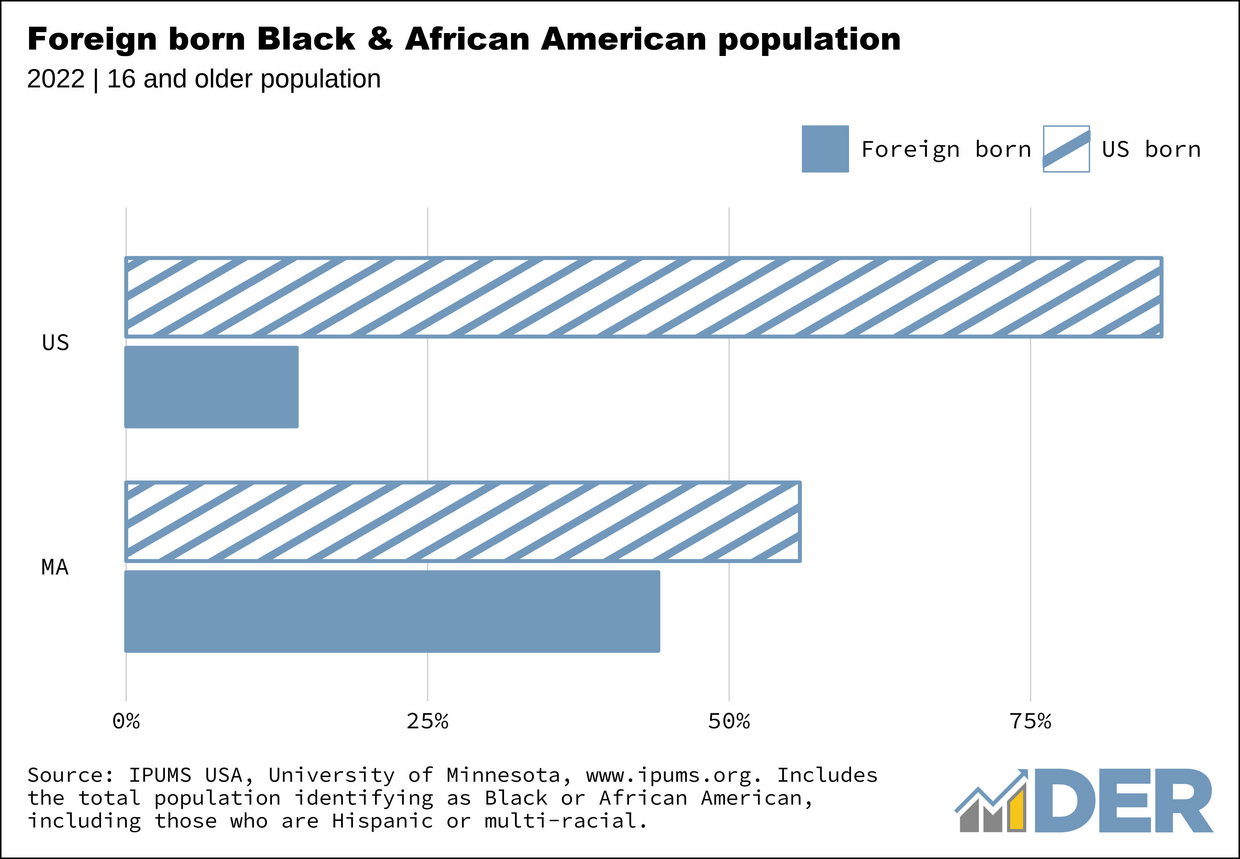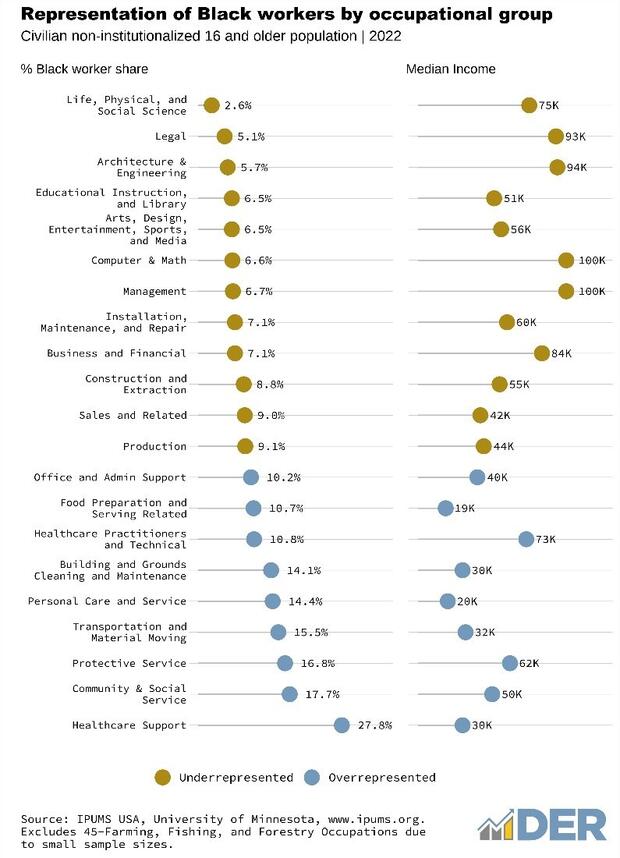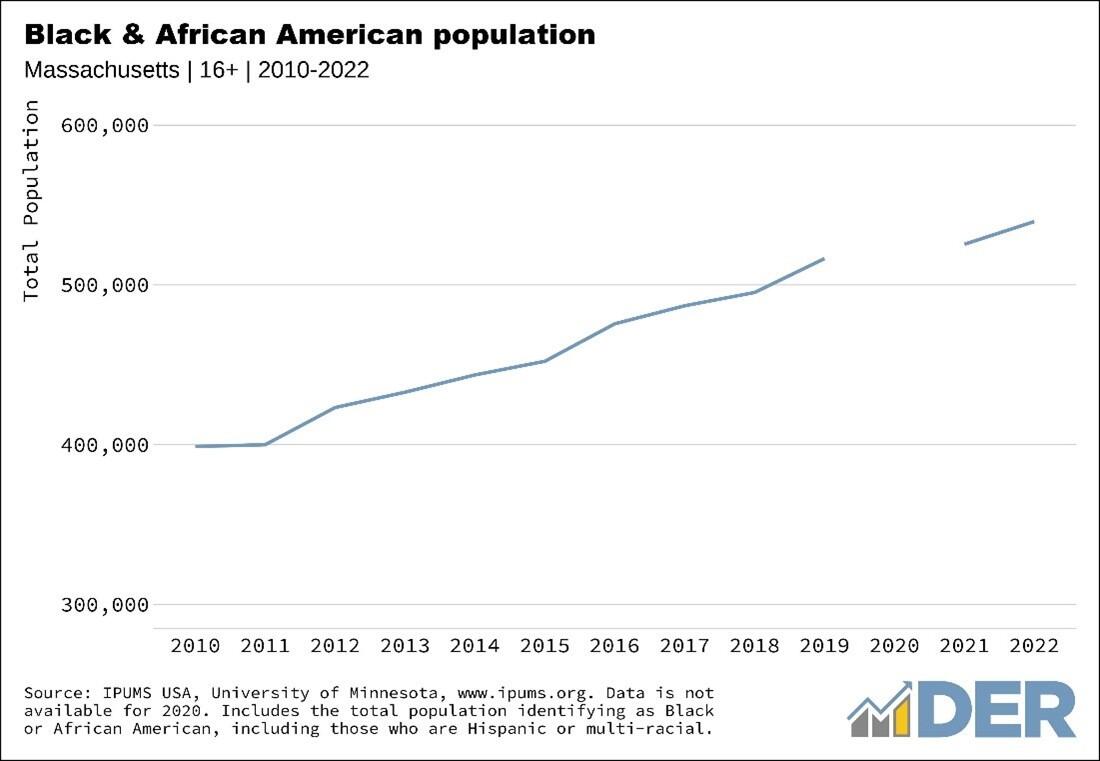- Executive Office of Labor and Workforce Development
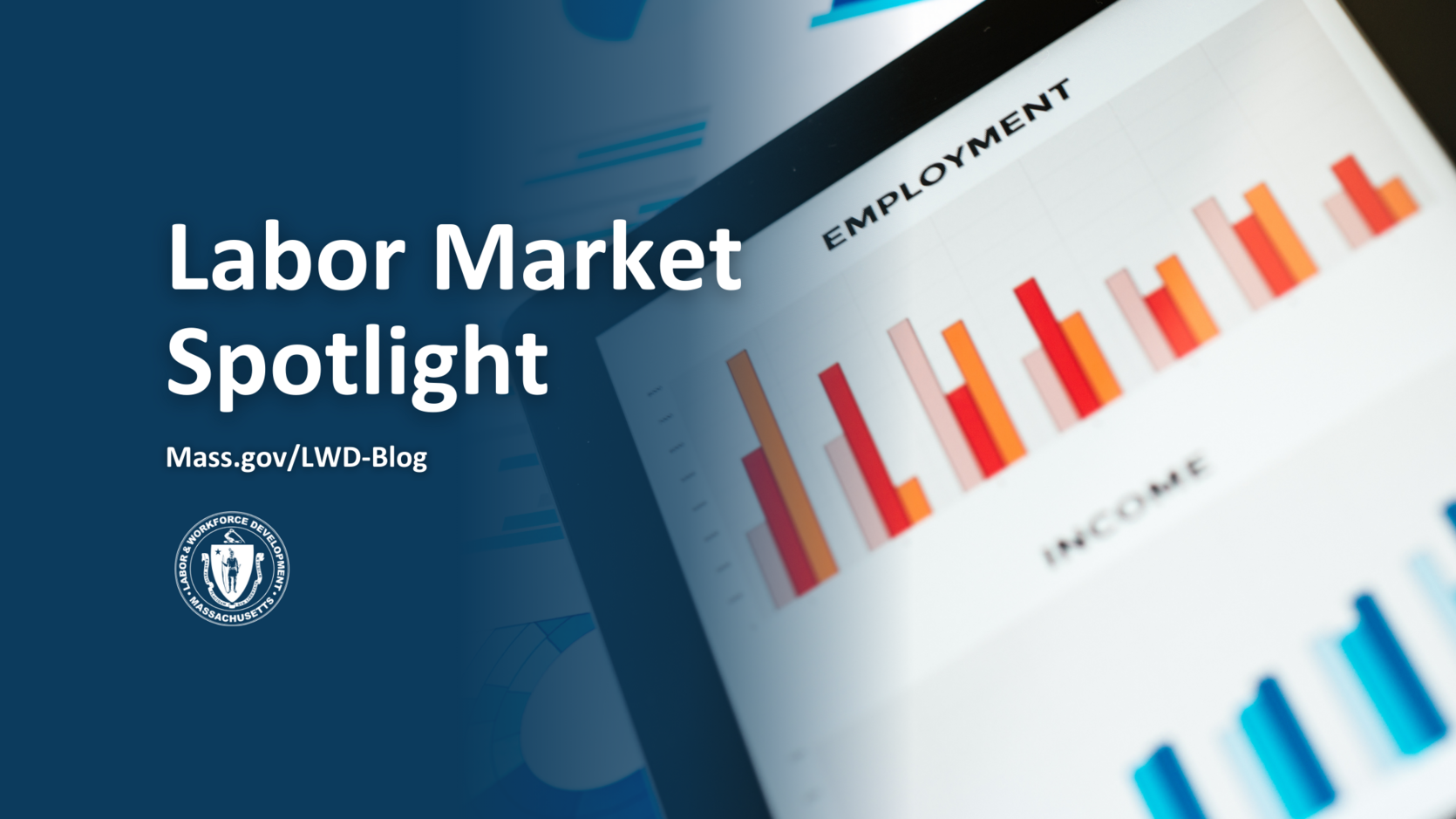
As Black History Month comes to a close, EOLWD is continuing to celebrate the unique and important contributions that the Black/African American community has made to the Commonwealth's workforce. The below demographic data and insights were compiled using Census data from the Integrated Public Use Micro Data Series which was analyzed by the Department of Economic Research (DER).
- Black/African Americans have the highest labor force participation rate of any race/ethnicity in Massachusetts - over 2% higher than the state average and over 4% higher than the US average.
- The percentage share of the foreign-born Black population in Massachusetts is significantly higher in Massachusetts than the US - 44% in Massachusetts vs. 14.1% in the US.
- The composition of the foreign-born Black population in Massachusetts is incredibly diverse, with 26% coming from Haiti and 5.6% coming from Ghana.
- Occupational equity issues persist in Massachusetts, as Black workers tend to be overrepresented in lower paying occupations like food preparation and serving occupations, transportation and moving occupations, and healthcare support occupations. Black workers are underrepresented among the higher paying occupations, like life sciences occupations, legal occupations, and tech occupations (computer & math).
- The Black/African American 16+ population in Massachusetts has been increasing both in terms of the total population and the percent share of the total labor force. Since 2010 the Black/African American population has increased from just under 400,000 persons to nearly 600,000 and from 7.8 percent of the labor force to 9.7 percent (percentage growth of 19.6% for black labor force share versus -2.1% for non-blacks).
The data here shows the increasing importance that the growing Black/African American population will play in the future economic vitality of the Commonwealth’s workforce. It is also a reminder that while progress is being made, there's still work to be done to achieve equitable opportunities for all workers. Among strategies to achieve equity in the workforce, the Workforce Training Fund Program (WTFP) aims to upskill current workers and increase workforce competitiveness. Last December, the Healey-Driscoll Administration awarded $19 Million in WTFP grants to that will train current and newly hired employees in areas like English as a second or foreign language classes, also known as ESOL, technology, and project management.
Click here to learn more about the Workforce Training Fund Program.
For more information about the Black and African American labor force, check out the Department of Economic Research Equity Dashboards.
Blog by MassLWD Communications Staff. Find our official agency accounts: Mass.gov/LWD
